The cool future tech you can find on the new Audi A7
Audi’s updated A7 Sportback brings plenty of fascinating technology to the premium coupe market. Here’s everything you need to know about semi-autonomous driving, mild hybrid drivetrains and haptic feedback infotainment
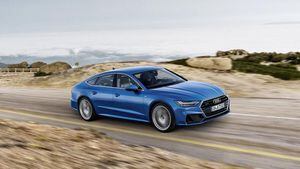
The new Audi A7 Sportback is finally upon us, sporting a new look, an improved interior and tonnes of new tech.
As one of Audi’s flagship models, it’s no surprise that the new A7 is absolutely packed full of technology – here, we highlight some of the most impressive technological feats fitted to the new car.
Semi-autonomous driving ability
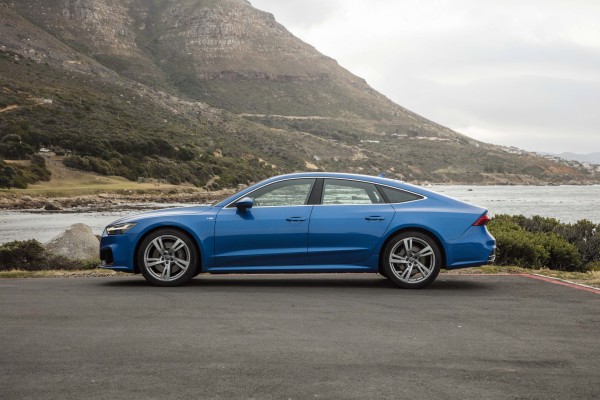
There are a number of driving aids to help motorists avoid crashes and reduce fatigue. Perhaps the most impressive you’ll use day-to-day is the adaptive cruise control. Not only does it control the car’s speed to maintain distance to the vehicle in front, but it also reads the lines on the road and steers the car to keep it in lane.
It’s only meant to assist your driving rather than completely take over, so you can only take your hands off the wheel for about 10 seconds before the system disengages, but it works well to reduce fatigue on long motorway drives.
It can park itself
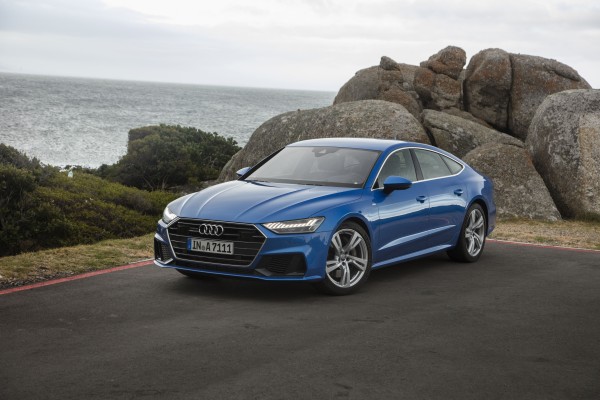
Audi parking pilot and garage pilot are new technologies being introduced later in the year. Owners can use a smartphone app to prompt the car to park itself, either in a garage or parking bay – you don’t even need to be in the vehicle at the time.
When the driver wants to leave, they can turn the car on via the app and it will move out of its space allowing them easy access to the car – particularly useful in tight garages or spaces where there’s a chance of knocking the door into a wall or other vehicle.
LEDs and lasers in the headlights
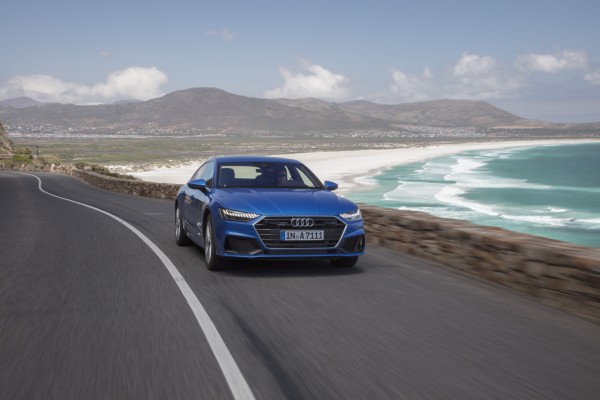
All cars get LED units in both the front and rear lights, and Audi has used the fact that each LED can be individually lit to create ‘welcome home’ animations. When locked, the LEDs scroll from side to side – it’s a bit of a gimmick, but it’s cool nonetheless.
Top-spec models also get HD Matrix LEDs, which can dim individually in order to not dazzle oncoming motorists so you can keep you full beams on the road ahead even when other cars are around.
Meanwhile, lasers are also an option, with Audi saying they offer twice as much illumination as a conventional LED high beam.
All-wheel steering
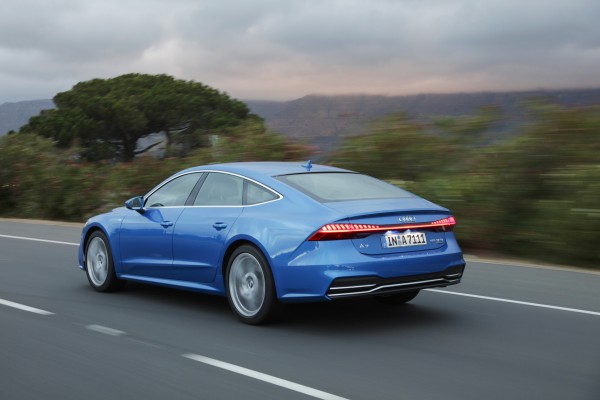
The old A7 Sportback was an excellent long distance cruiser, but one area it lacked was its cornering ability – unsurprising for such a big, comfort-focused vehicle. However, Audi has addressed this in the new car with all-wheel steering.
This technology is slowly becoming more common at the top end of the market – and, impressively, in the new Renault Megane – and sees the rear wheels turn to improve agility and stability.
At low speeds, the rear wheels turn in opposite directions to the front, which has the effect of shortening the wheelbase and improving the turning circle – it genuinely feels much more agile in corners than you’d expect. Meanwhile, the rear wheels turn in the same direction as the fronts at high speeds to improve stability.
The angles involved are tiny compared to the front, but they have a noticeable effect.
Mild hybrid set-up improves performance and efficiency
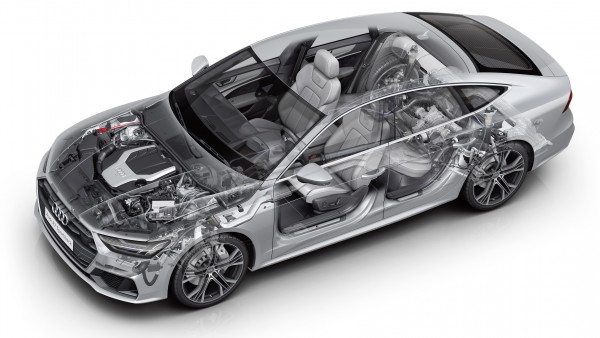
As car companies fight to achieve ever more stringent emissions and economy targets, electrification is becoming commonplace. The A7 Sportback utilises a ‘mild hybrid’ set-up on both the diesel and petrol engines to give a slight boost to performance and improve economy.
The electric motor takes over the running of ancillary systems when acceleration is not required so the engine can shut off, such as when coasting on the motorway. It also means the start/stop function can be extended to cut in at slightly higher speeds. The result is a saving of about 0.1 gallons of fuel every 60 miles.
Double touchscreens and haptic feedback
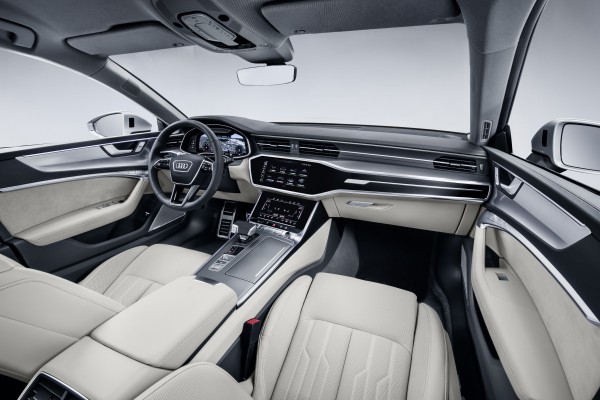
The centre console now gets two touchscreens, which give it a futuristic look. Pretty much all physical buttons have been removed, with everything from the satellite navigation to the climate system controlled through the interfaces.
There are some cool features, such as the lower screen becoming a keyboard when entering data such as navigation addresses, and the clicks and vibrations that accompany touches to improve response.
However, it’s not at all intuitive to use, and requires a lot more looking away from the road than traditional button-based set-ups do. It also takes quite a firm press to register inputs, which can slow down operation.
It looks great, and you’d probably get used to it, but the wiping out of old fashioned buttons is a big shame.





